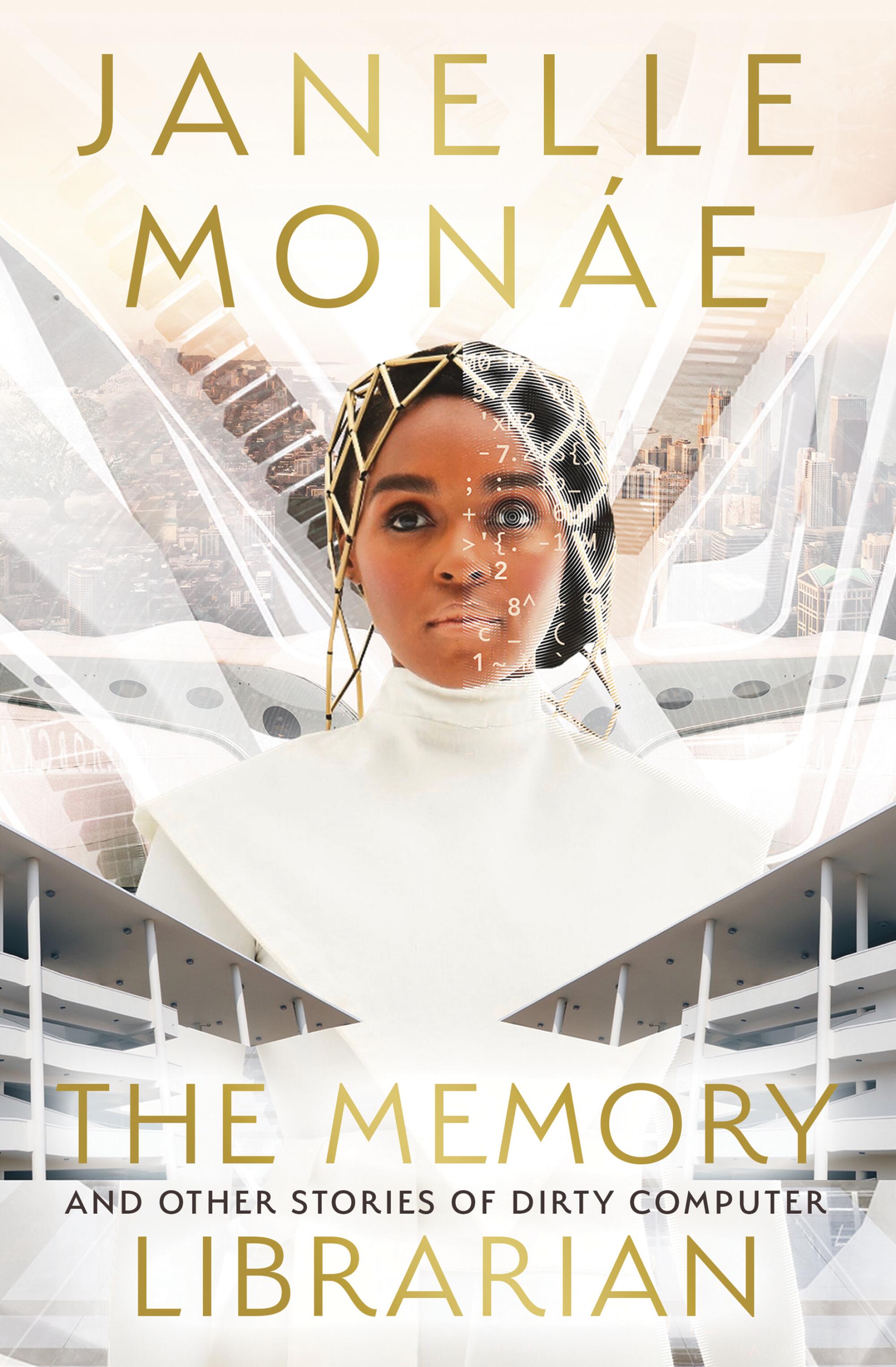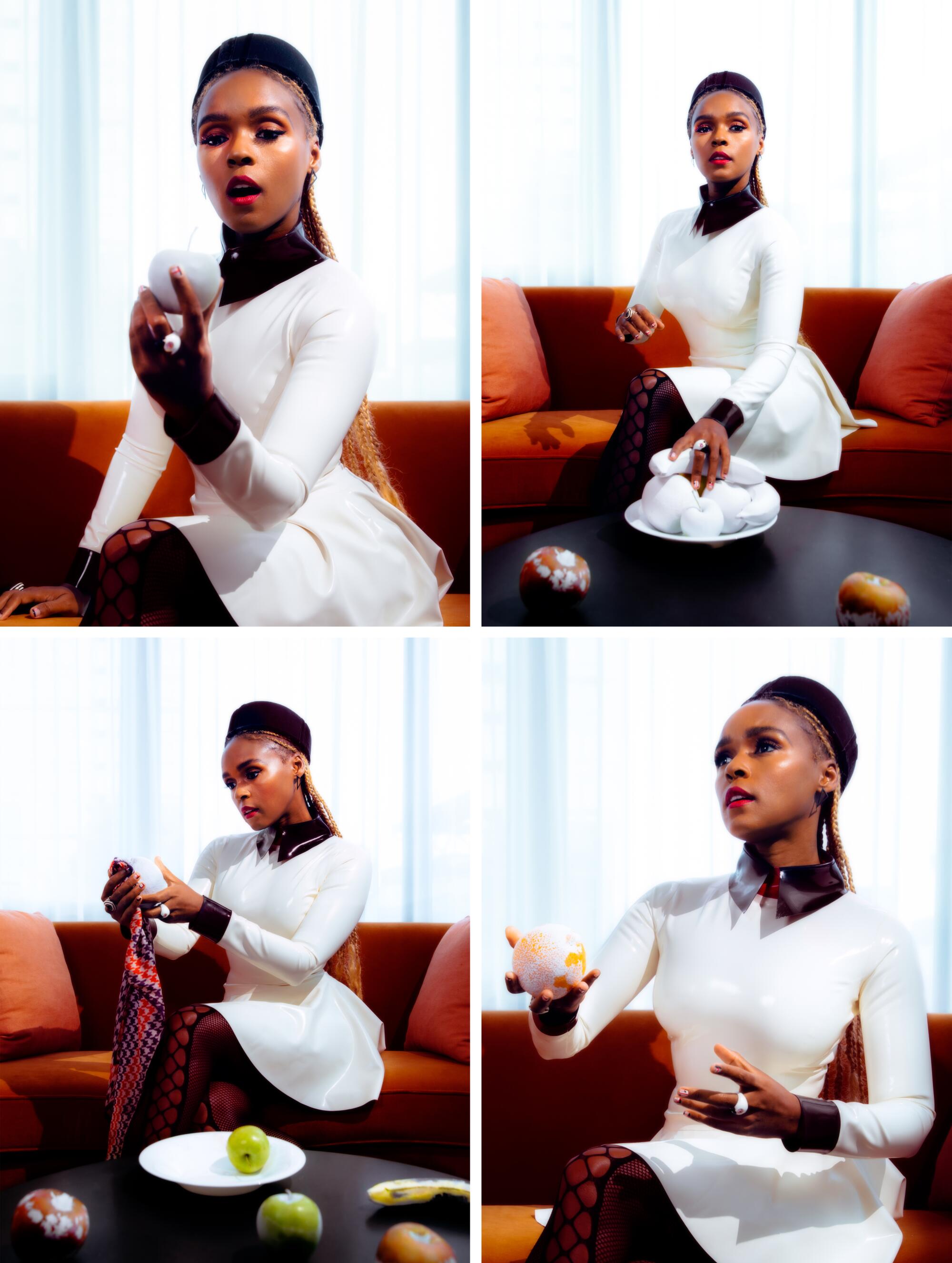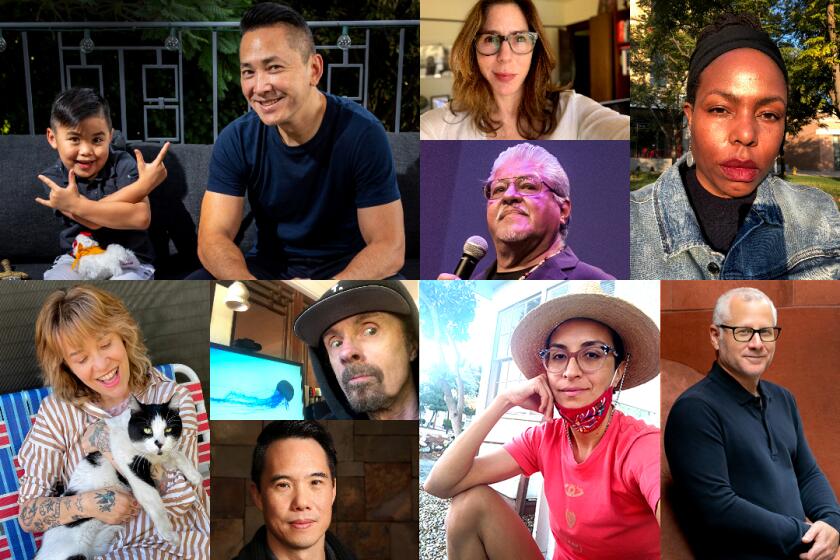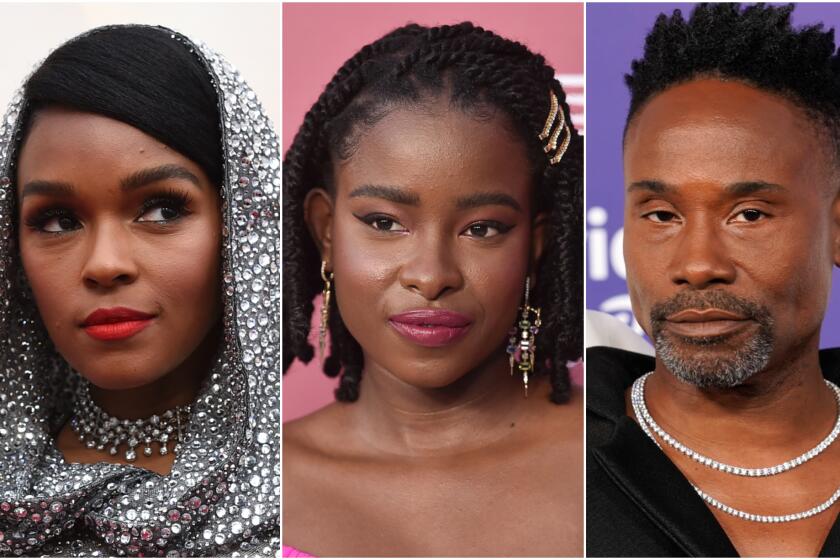- Share via

On the Shelf
The Memory Librarian: And Other Stories of Dirty Computer
By Janelle Monáe
Harper: 336 pages, $29
If you buy books linked on our site, The Times may earn a commission from Bookshop.org, whose fees support independent bookstores.
Janelle Monáe’s first foray into literature is science fiction … kind of. As Monáe notes, we already live in a world where drones can kill, computers and phones track almost everything we do, government officials are seizing control of women’s bodies while working to memory-hole queerness and discussions of racism. “The Memory Librarian: and Other Stories of Dirty Computer” seems, Monáe says during a video conversation, all too real.
“I hate that it feels so meta, that this is all happening now,” says the Grammy-nominated singer, actor and activist whose music has used science fiction to explore otherness and who has chosen the roles of outsiders in movies as well (“Moonlight,” “Hidden Figures” and “Harriet”).
The book’s five thematically linked stories, each co-written with a different author, all play off Monáe’s 2018 post-cyber-punk album “Dirty Computer,” which blended many sounds and styles — rap, pop, funk, R&B, rock and every subgenre imaginable — but felt more directly personal in its celebration of Black women and their sexuality than her earlier, more metaphorical albums.
Monáe felt the album was still resonating after she finished recording it. She made a 45-minute short film inspired by the album but even that wasn’t enough. “The themes were strong and I knew there were more stories to tell,” she explains.
“Memory Librarian” explores a futuristic world in which an organization called the New Dawn takes a Big Brother-esque approach to wiping out human desires deemed abnormal, seeking to create “their versions of what ideal citizens should be,” Monáe says. “They’ll strip people of their own selves.”
People in marginalized groups, especially in the LGBTQ community, are in danger of having their memory wiped out with a drug called Nevermind. Anyone who sympathizes with them or rebels against the system is also in danger.
The night before Janelle Monáe revealed the first glimpse of the “emotion picture” she had commissioned to accompany her latest album, “Dirty Computer,” was a restless one.
In one story, “Nevermind,” a group of women and nonbinary people, including some who have escaped New Dawn’s nefarious grasp, hides out off the grid in the Pynk Hotel until someone betrays the cause. In “Save Changes,” two sisters in Manhattan have been ostracized by their peers because their parents were revolutionaries; their mother has been wiped clean and dawdles away her days, while one sister shows rule-breaking tendencies of her own, leading to a crisis … and an opportunity.
The world these characters inhabit can seem bleak, but they don’t give in or give up. Monáe considers the book an act of optimism. “In order to survive this world you need a dose of hope and a dose of the attitude of ‘If we don’t speak then stuff won’t get done,’” she says. “There has to be conversation and real radical systemic changes.”

Monáe brings a carefree spirit to thoughtful conversation — happy to veer off on a tangent, deeply enmeshed in the issues raised by her high-concept work. The singer identifies as nonbinary, adding: “My pronouns are free-ass m— and they/them, her/she.”
Although she sees the book as a cautionary tale — “if we aren’t careful, we will end up in this world” — anyone who has listened to Monáe’s music or seen her videos knows that caution isn’t her strong suit. (Though she does favor a tux.) Her simple but powerful 2015 protest song “Hell You Talmabout” is as blunt as “Dirty Computer” is elusive, chanting the names of Black people killed by police with the powerfully punctuated refrain, “say his name.”
Monáe has always made bold, even flamboyant fashion statements integral to her persona. Her signature black-and-white outfits, one of which she wore for our interview, use geometric patterns to keep the eyes zigging and zagging. (Though I managed to spy, behind her, a guitar and shelves of vinyl records — and when I commented on the albums, she tilted the computer to show me walls and walls of them.)
That boldness and play leavens the stories as well. In “Nevermind,” the attack comes when the women of the Pynk Hotel are planning their annual festival, during which they display paintings or act or cook or sing; in “Save Changes,” the two sisters spend an unforgettable night at a joyous, hedonistic party of free spirits who are filled with love and camaraderie.
“We wanted that to be clear we were celebrating queerness, celebrating being trans and nonbinary,” says Monáe. “We wanted to make sure we spoke about how beautiful it is to be able to embrace the spectrum of gender. And how beautiful it is for people to stand up for you even if they don’t identify the same way as you. “
A guide to the literary geography of Los Angeles: A comprehensive bookstore map, writers’ meetups, place histories, an author survey, essays and more.
Monáe’s “we” is not some kind of royal affectation. She brought in five writers who shared her vision to collaborate on the stories: Alaya Dawn Johnson, Danny Lore, Eve L. Ewing, Yohanca Delgado and Sheree Renée Thomas.
Co-writers helped flesh out Monáe’s ambitions beyond her personal bandwidth. It took several years for her to even conceive the book; time had been too scarce to find the mental space for the “thought experiments” that led to these stories. (She had other help too: “I’m not going to lie, one time I was on mushrooms when I thought of some these things.”)
Celebrity books are nothing new, but this one certainly is. “I could have done a coffee table book of just my own quotes,” Monáe says, “but I thought it would be cool to do something innovative in the literary world, to do something that wasn’t just about me. I had an opportunity to introduce these writers to my audience and me to their audience. I wanted to show what we could do when we come together. It means so much more to me this way.”
Things didn’t turn out exactly as planned. Monáe likened it to putting together the best possible band, with a vision of gathering everyone in a room as if they were recording an album. “I would love to be telling you we met every day and hung out and went to an island and smoked some weed and came up with these stories,” Monáe says. Instead, the collaborating was done over Zoom during the pandemic, while the superstar was feeling depressed, paranoid and isolated. “This was when people were spraying Lysol on cardboard boxes.”
Monáe, who autographed 964 copies of the book just before our interview, is now doing promotional events like her panel at the L.A. Times Festival of Books on Saturday, which will provide “an opportunity to hug my collaborators and tell them thank you in person.”

Now 36, Monáe believes she has reached a stage in her fame and her life when it becomes important to share the spotlight. “I don’t need to prove I can act, sing, dance, write,” she says. “I felt for a long time I had to prove those things, maybe not to anybody else but to myself. Now I’m more carefree and having fun.”
Science fiction was the musician’s first love. Growing up in Kansas City, Kan., she read sci-fi and fantasy, wrote short stories and participated in the Young Playwrights’ Roundtable in Kansas City, Mo. “I was the kid who was writing about aliens coming in and abducting my grandmother through photosynthesis.”
These new stories still address Monáe’s fears, albeit in more nuanced ways than her childhood sagas. In “Timebox,” a couple moves into their first apartment together and discovers a room where time freezes, offering the opportunity to catch up on sleep, work or other parts of life that often slip away as the hours race by.
T.C. Boyle, Viet Than Nguyen, Rachel Kushner, Carribean Fragoza, Tom Perrotta, Charles Yu, Michelle Tea, Dana Johnson, Luis J. Rodriguez on their pandemic years.
“It’s about the specific consequences of time poverty and time theft for brown and Black people,” Monáe says. “If you could reclaim your time, what would you do?”
The catch in the story is that the two women, Raven and Akilah, have very different ideas about how to answer that question: Raven, who is juggling work and school, wants to use it for herself so she is better equipped to contribute to society, but Akilah argues that they must open it up to others.
The inspiration for the story clearly comes from the artist’s life. “I’m no good if I’m depleted,” she says. “I have been deprived of being able to just celebrate life because I spend so much time fighting against white supremacy, against sexism and racism.”
Monáe splits the difference between her two characters’ approaches, saying that if there were a Timebox in the next room, “Oh man, I’m telling you, I’m having way more sex and writing more poetry and pulling in my family that I haven’t been able to spend as much time with because of my career.”
Yet as someone whose art always aims toward social justice, “I’d also use the Timebox to help other people in the community who need that time.”
The goal of the story, Monáe says, is to get people thinking about the question of what to do with our gifts, just as she does in the course of making her art. “I’m still asking myself who I agree with — both make great points because there are so many nuances.”
The Los Angeles Times has announced the lineup for this year’s Festival of Books. See which authors are among the 500-plus set to participate.
Monáe says she isn’t done with the themes and concepts of “Dirty Computer” just yet. “My goal is always to maximize the fullest potential of an idea,” she says, adding that her company, Wondaland, is engaged in conversations about adapting the pieces for film or TV.
If these stories come to life on a screen big or small, Monáe is open to starring in one or more. But there’s another possibility that intrigues this multihyphenate artist: going behind the camera. “I would love to direct,” Monáe says. “I know I have a director’s mind.”
That mind will continue to roam and experiment, striving to shed light on a darkening world, a worthy mission no matter the medium.
Monáe will appear at the Times Festival of Books on at 2:30 p.m. Saturday in conversation with Times columnist Erika D. Smith.
More to Read
Sign up for our Book Club newsletter
Get the latest news, events and more from the Los Angeles Times Book Club, and help us get L.A. reading and talking.
You may occasionally receive promotional content from the Los Angeles Times.










